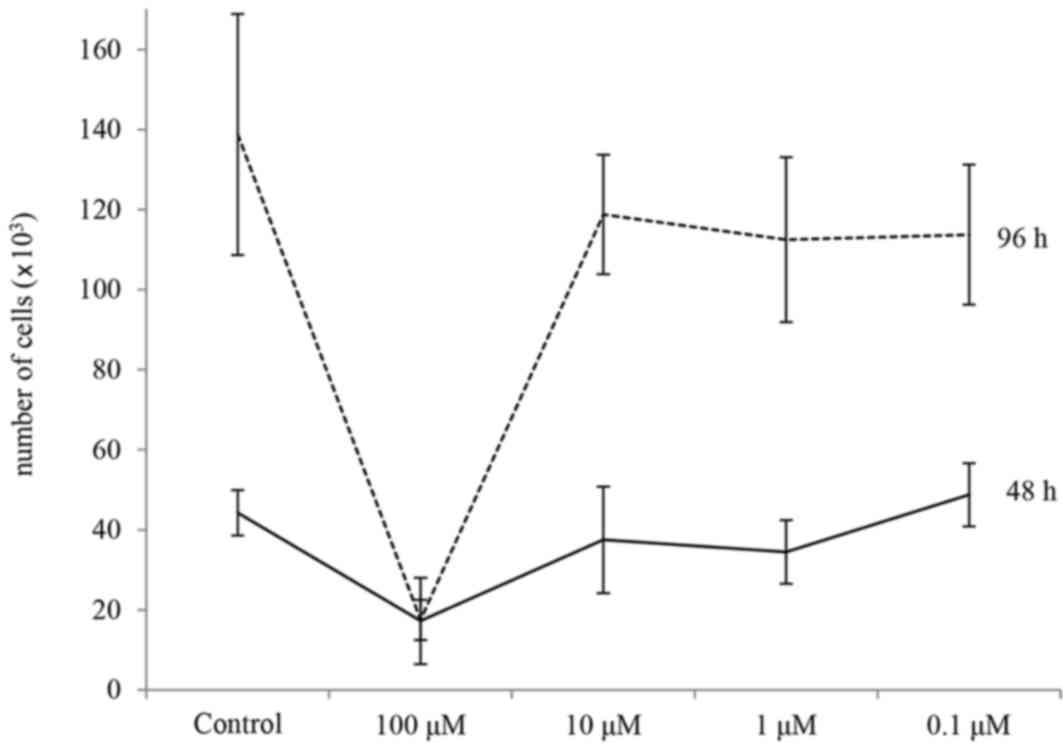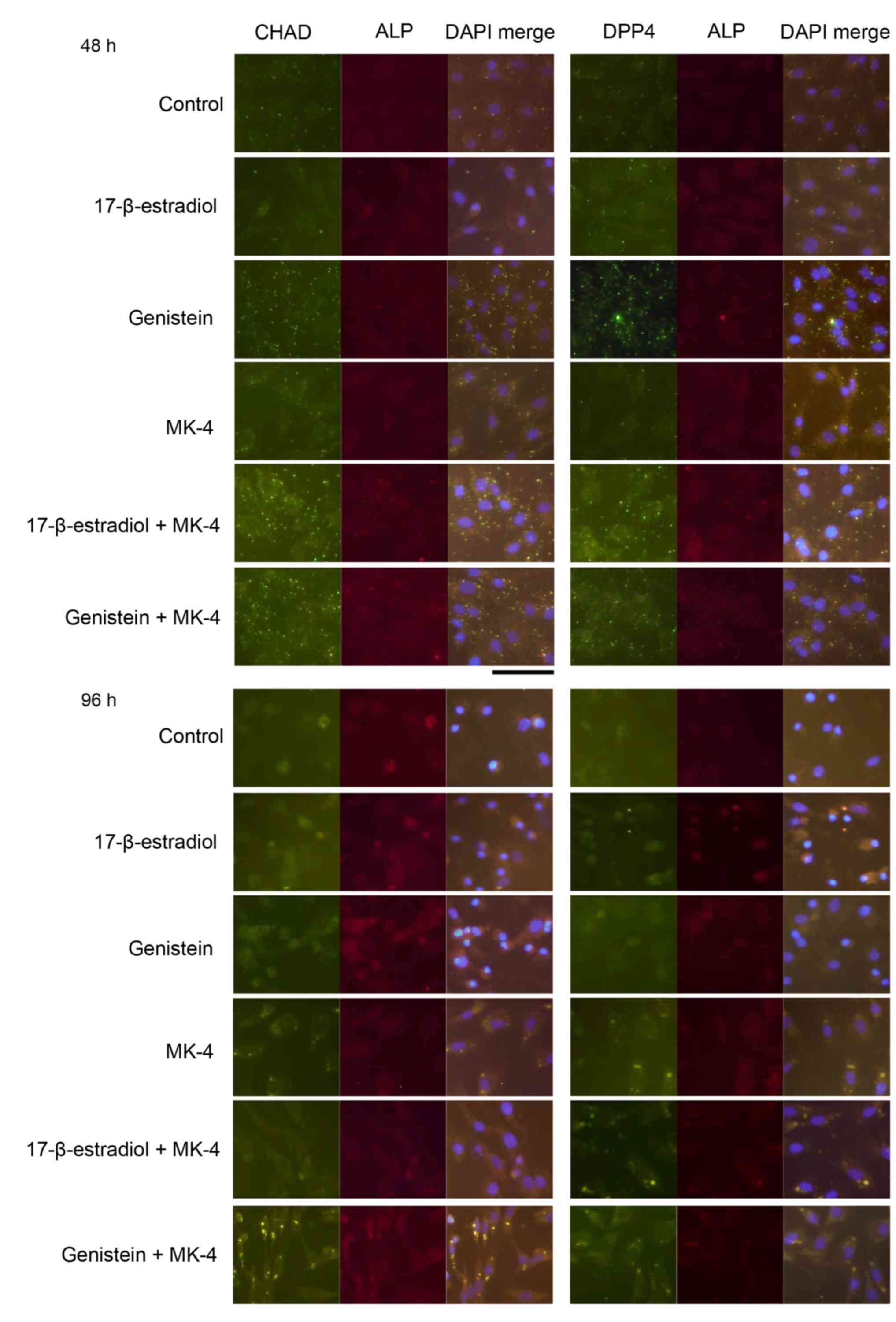|
1
|
Milgram JW: Adult bone structure.
Radiologic and Histrogic Pathology of Nontumorous Diseases of Bone
and Joints. 1. Illinoi, USA: Northbrook Publishing Co. Inc.; pp.
1–5. 1990
|
|
2
|
Czernick B: Morphology of normal bone.
Dolfman and Czernick's Bone Tumors. 2nd. Philadelphia, USA:
Elsevier; pp. 3–12. 1998
|
|
3
|
Matsuo K and Irie N: Osteoclast-osteoblast
communication. Arch Biochem Biophys. 473:201–209. 2008. View Article : Google Scholar : PubMed/NCBI
|
|
4
|
Turner RT, Riggs BL and Spelsberg TC:
Skeletal effects of estrogen. Endocr Rev. 15:275–300. 1994.
View Article : Google Scholar : PubMed/NCBI
|
|
5
|
Ballane G, Cauley JA, Luckey MM and
Fuleihan Gel-H: Secular trends in hip fractures worldwide: Opposing
trends East versus West. J Bone Miner Res. 29:1745–1755. 2014.
View Article : Google Scholar : PubMed/NCBI
|
|
6
|
Zaheer K and Akhtar Humayoun MH: An
updated review of dietary isoflavones: Nutrition, processing,
bioavailability and impacts on human health. Crit Rev Food Sci
Nutr. 57:1280–1293. 2017. View Article : Google Scholar : PubMed/NCBI
|
|
7
|
Hertrampf T, Gruca MJ, Seibel J,
Laudenbach U, Fritzemeier KH and Diel P: The bone-protective effect
of the phytoestrogen genistein is mediated via ER alpha-dependent
mechanisms and strongly enhanced by physical activity. Bone.
40:1529–1535. 2007. View Article : Google Scholar : PubMed/NCBI
|
|
8
|
Hur HG, Lay JO Jr, Beger RD, Freeman JP
and Rafii F: Isolation of human intestinal bacteria metabolizing
the natural isoflavone glycosides daidzin and genistin. Arch
Microbiol. 174:422–428. 2000. View Article : Google Scholar : PubMed/NCBI
|
|
9
|
Katsuyama H, Arii M, Hinenoya H,
Matsushima M, Fushimi S, Tomita M, Okuyama T, Hidaka K, Watanabe Y,
Tamechika Y and Saijoh K: Alterations in bone turnover by
isoflavone aglycone supplementation in relation to estrogen
receptor α polymorphism. Mol Med Rep. 3:531–535. 2010. View Article : Google Scholar : PubMed/NCBI
|
|
10
|
Kaneki M, Hodges SJ, Hosoi T, Fujiwara S,
Lyons A, Crean SJ, Ishida N, Nakagawa M, Takechi M, Sano Y, et al:
Japanese fermented soybean food as the major determinant of the
large geographic difference in circulating levels of Vitamin K2:
Possible implications for hip-fracture risk. Nutrition. 17:315–321.
2001. View Article : Google Scholar : PubMed/NCBI
|
|
11
|
Katsuyama H, Ideguchi S, Fukunaga M,
Fukunaga T, Saijoh K and Sunami S: Promotion of bone formation by
fermented soybean (Natto) intake in premenopausal women. J Nutr Sci
Vitaminol (Tokyo). 50:114–120. 2004. View Article : Google Scholar : PubMed/NCBI
|
|
12
|
Tsangalis D, Wilcox G, Shah NP and
Stojanovska L: Bioavailability of isoflavone phytoestrogens in
postmenopausal women consuming soya milk fermented with probiotic
bifidobacteria. Br J Nutr. 93:867–877. 2005. View Article : Google Scholar : PubMed/NCBI
|
|
13
|
Schurgers LJ and Vermeer C: Determination
of phylloquinone and menaquinones in food. Effect of food matrix on
circulating vitamin K concentrations. Haemostasis. 30:298–307.
2000.PubMed/NCBI
|
|
14
|
Tsukamoto Y, Ichise H, Kakuda H and
Yamaguchi M: Intake of fermented soybean (natto) increases
circulating vitamin K2 (menaquinone-7) and gamma-carboxylated
osteocalcin concentration in normal individuals. J Bone Miner
Metab. 18:216–222. 2000. View Article : Google Scholar : PubMed/NCBI
|
|
15
|
Elder SJ, Haytowitz DB, Howe J, Peterson
JW and Booth SL: Vitamin K contents of meat, dairy, and fast food
in the U.S. Diet. J Agric Food Chem. 54:463–467. 2006. View Article : Google Scholar : PubMed/NCBI
|
|
16
|
Sato T, Schurgers LJ and Uenishi K:
Comparison of menaquinone-4 and menaquinone-7 bioavailability in
healthy women. Nutr J. 11:932012. View Article : Google Scholar : PubMed/NCBI
|
|
17
|
Davis L, Kuehl M and Battey J: Selection
of Poly-A+ RNA on Oligo-dT Cellulose. Basic Methods in
Molecular Biology. 2nd. Connecticut, USA: Appleton & Lange; pp.
344–349. 1994
|
|
18
|
Livak KJ and Schmittgen TD: Analysis of
relative gene expression data using real-time quantitative PCR and
the 2(−Delta Delta C(T)) method. Methods. 25:402–408. 2001.
View Article : Google Scholar : PubMed/NCBI
|
|
19
|
Dawson-Saunders B and Trapp RG: Comparing
three or more means. IN basic and clinical biostatistics
Connecticut, USA: Appleton & Lange; pp. 124–141. 1990
|
|
20
|
Kuiper GG, Lemmen JG, Carlsson B, Corton
JC, Safe SH, van der Saag PT, van der Burg B and Gustafsson JK:
Interaction of estrogenic chemicals and phytoestrogens with
estrogen receptor β. Endocrinology. 139:4252–4263. 1998. View Article : Google Scholar : PubMed/NCBI
|
|
21
|
Takahashi T, Saito A, Hashimoto S and Sato
C: Isoflavone contents of soybean and soy-based foods produced in
Hokkaido. Rep Hokkaido Inst Pub Hlth. 52:29–36. 2002.
|
|
22
|
Standard tables of food composition in
Japan, . 7th. Ministry of Education Culture, Sports, Science and
Technology. Japan: 2016, (In Japanese).
|
|
23
|
Bhushan R, Grünhagen J, Becker J, Robinson
PN, Ott CE and Knaus P: miR-181a promotes osteoblastic
differentiation through repression of TGF-β signaling molecules.
Int J Biochem Cell Biol. 45:696–705. 2013. View Article : Google Scholar : PubMed/NCBI
|
|
24
|
Zanotti S and Canalis E: Notch signaling
and the skeleton. Endocr Rev. 37:223–253. 2016. View Article : Google Scholar : PubMed/NCBI
|
|
25
|
Keller KC, Ding H, Tieu R, Sparks NR,
Ehnes DD and Nieden Zur NI: Wnt5a supports osteogenic lineage
decisions in embryonic stem cells. Stem Cells Dev. 25:1020–1032.
2016. View Article : Google Scholar : PubMed/NCBI
|
|
26
|
Kobayashi Y, Uehara S, Udagawa N and
Takahashi N: Regulation of bone metabolism by Wnt signals. J
Biochem. 159:387–392. 2016. View Article : Google Scholar : PubMed/NCBI
|
|
27
|
Yamaguchi M: Nutritional factors and bone
homeostasis: Synergistic effect with zinc and genistein in
osteogenesis. Mol Cell Biochem. 366:201–221. 2012. View Article : Google Scholar : PubMed/NCBI
|
|
28
|
Katsuyama H, Fushimi S, Yamane K, Watanabe
Y, Shimoya K, Okuyama T, Katsuyama M, Saijoh K and Tomita M: Effect
of vitamin K2 on the development of stress-induced osteopenia in a
growing senescence-accelerated mouse prone 6 strain. Exp Ther Med.
10:843–850. 2015.PubMed/NCBI
|
|
29
|
Shikano K, Kaneko K, Kawazoe M, Kaburaki
M, Hasunuma T and Kawai S: Efficacy of vitamin K2 for
glucocorticoid-induced osteoporosis in patients with systemic
autoimmune diseases. Intern Med. 55:1997–2003. 2016. View Article : Google Scholar : PubMed/NCBI
|
|
30
|
Capulli M, Olstad OK, Onnerfjord P,
Tillgren V, Muraca M, Gautvik KM, Heinegård D, Rucci N and Teti A:
The C-terminal domain of chondroadherin: A new regulator of
osteoclast motility counteracting bone loss. J Bone Miner Res.
29:1833–1846. 2014. View Article : Google Scholar : PubMed/NCBI
|
|
31
|
Meier C, Schwartz AV, Egger A and
Lecka-Czernik B: Effects of diabetes drugs on the skeleton. Bone.
82:93–100. 2016. View Article : Google Scholar : PubMed/NCBI
|
|
32
|
Hausmann J, Kamtekar S, Christodoulou E,
Day JE, Wu T, Fulkerson Z, Albers HM, van Meeteren LA, Houben AJ,
van Zeijl L, et al: Structural basis for substrate discrimination
and integrin binding by autotaxin. Nat Struct Mol Biol. 18:198–204.
2011. View Article : Google Scholar : PubMed/NCBI
|
|
33
|
Orriss IR, Key ML, Hajjawi MO, Millán JL
and Arnett TR: Acidosis is a key regulator of osteoblast
ecto-nucleotidase pyrophosphatase/phosphodiesterase 1 (NPP1)
expression and activity. J Cell Physiol. 230:3049–3056. 2015.
View Article : Google Scholar : PubMed/NCBI
|
|
34
|
ATP11A ATPase phospholipid transporting
11A. Gene ID: 23250. https://www.ncbi.nlm.nih.gov/gene/23250
|











